25 terms you should know to understand the gun control debate
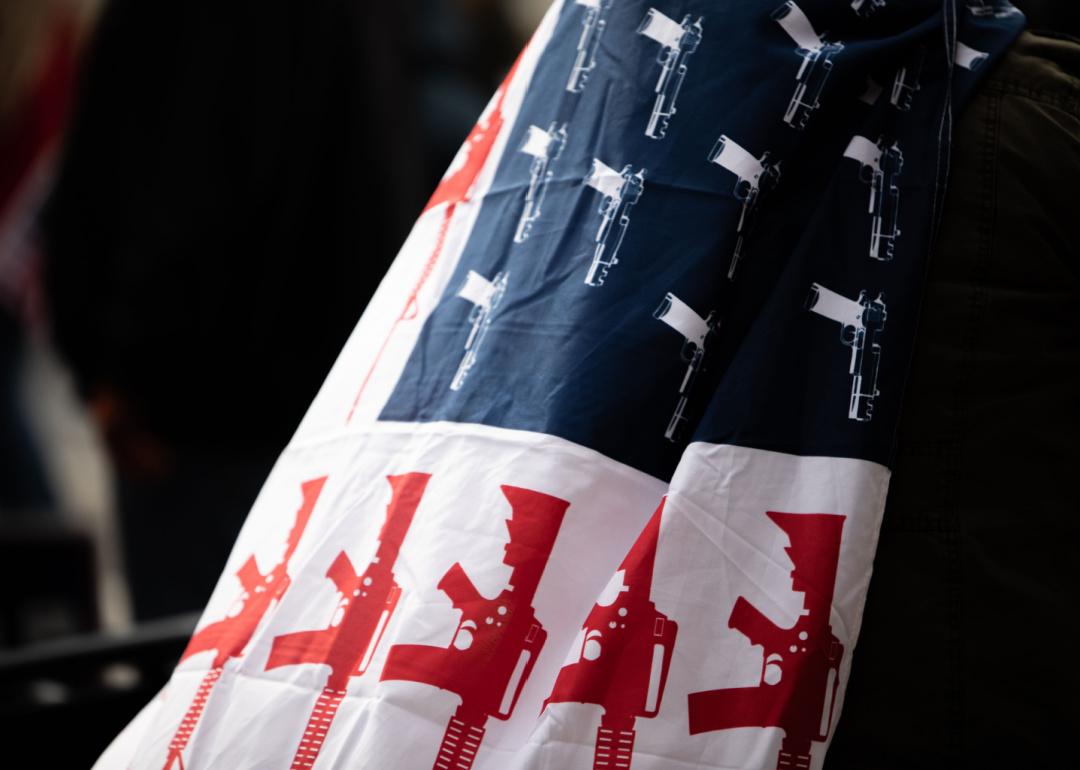
Trevor Bexon // Shutterstock
25 terms you should know to understand the gun control debate
Gun icon covers American flag at a ‘Stop the Steal’ protest in Nevada on Nov. 7, 2020.
In a country where three in 10 adults own a gun and nearly half of households have at least one gun in the home, 100 Americans die every day from gunshot wounds. Nearly half of all U.S. adults grew up in a household with guns, more than half have friends who own guns, and nearly three-quarters have fired a gun. The prevalence of gun violence and gun ownership has made gun control among the most hotly (and frequently) contested issues in the United States.
Advocates for gun control want tighter restrictions on the sale, possession, and use of firearms, while advocates of gun rights see ownership as an essential right protected by the Second Amendment to the U.S. Constitution. The debate heats up each time a mass shooting—defined as a shooting involving the death or injury of four or more people—occurs, which now happens, on average, every day in the United States. Seven of the 10 deadliest U.S. shootings have happened in the past decade, including the Robb Elementary School shooting in Uvalde, Texas, in May 2022.
Reform advocates point to evidence showing fewer people die from gun violence in states with strong gun laws. Case in point: Alaska has one of the highest gun death rates and some of the weakest gun laws, while Hawaii has the lowest gun death rate and some of the strongest gun laws. Advocates for reform have steadily gathered momentum: Some young survivors of the Parkland, Florida, school shooting, for example, proposed a blueprint for comprehensive gun control. Everytown for Gun Safety, founded by former New York City Mayor Michael Bloomberg, has spent millions of dollars to promote gun control through ballot initiatives and state elections. An August 2022 study conducted by the University of Chicago Harris School of Public Policy and The Associated Press-NORC Center for Public Affairs Research found that 71% of Americans say gun laws should be stricter.
Meanwhile, more hardline groups such as Gun Owners of America fight hard in Washington D.C. for lawmakers’ support. Gun advocates argue that more guns, not less, will help to prevent or stop shootings—and that stricter gun-control laws will only keep guns out of the hands of honest people. But this has not stopped the current administration from responding to public appeal as regards gun ownership.
In June 2022, just over a month after the horrific shooting at Uvalde, President Joe Biden signed the Bipartisan Safer Communities Act, which incentivizes states to pass “red flag” laws, expands background checks for those under age 21, and closes what is known as the “boyfriend loophole.” Previous legislation had prevented those convicted of domestic abuse from owning a firearm; the new bill now includes dating partners under that restriction, in addition to spouses and former spouses. In some respects, this bill is a rebuttal to the Supreme Court’s ruling, which had been handed down just days before the signing of the bill, that effectively nullified New York state’s concealed carry law.
Seeing as gun control will continue to be a major legislative issue for years to come, here are 25 terms critical to understanding and participating in the conversation.
You may also like: 50 facts about guns in America
![]()
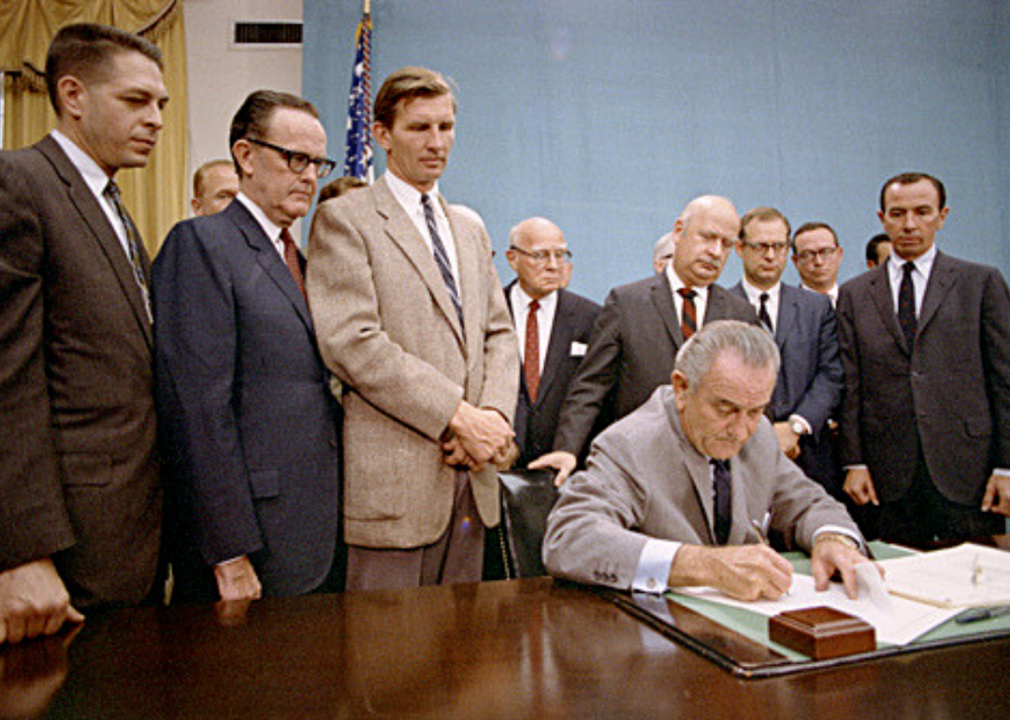
Frank Wolfe // Wikimedia Commons
Gun Control Act of 1968
The Gun Control Act of 1968 set the legal precedents for the sale of guns in the United States. It determined licensing requirements, restrictions on who could purchase firearms, and regulation of interstate trading.
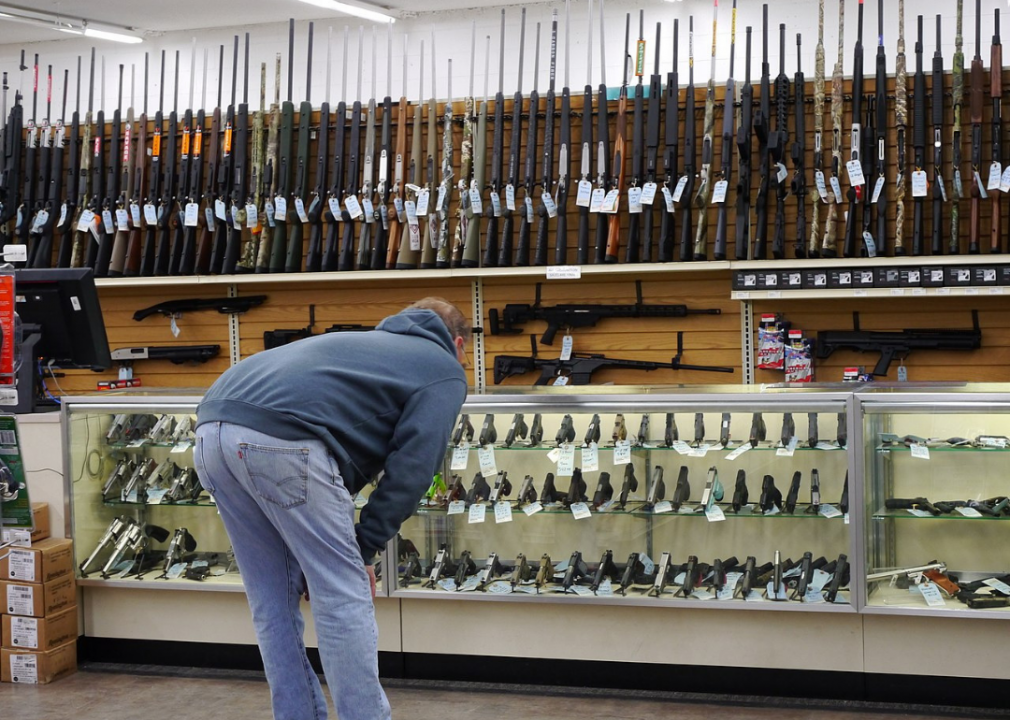
Thayne Tuason // Wikimedia Commons
Firearm Owners Protection Act
Enacted in 1986, the Firearm Owners Protection Act addressed aspects of the 1968 law that were seen by many as going too far. It loosened regulations of interstate transfers, some gun sales, and record keeping.
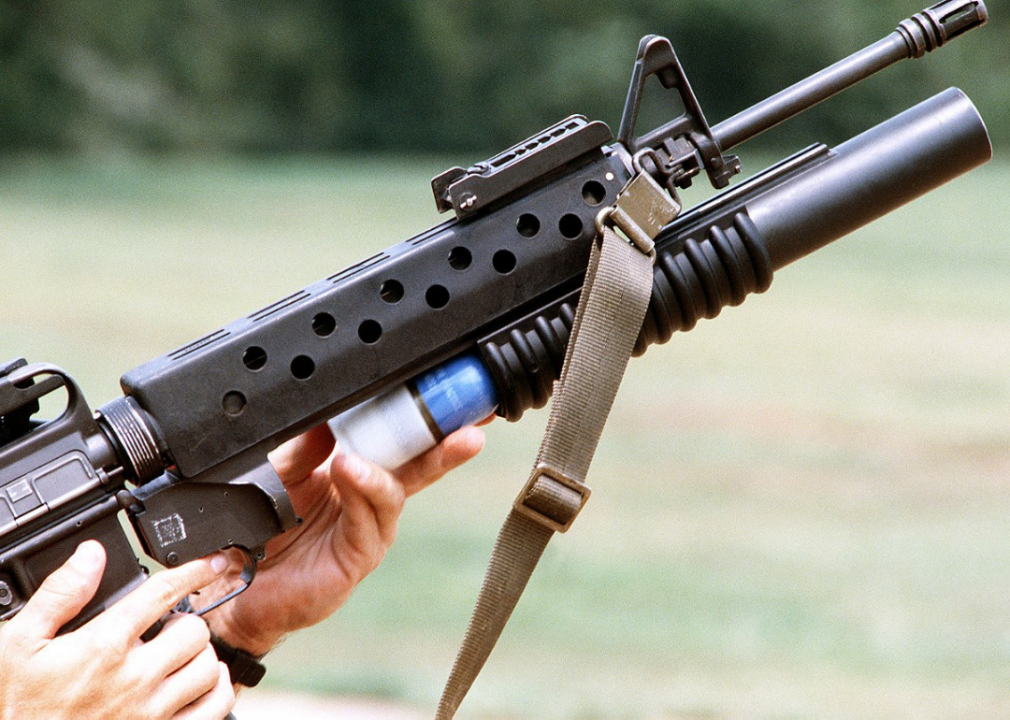
Staff Sergeant John K. McDowell // Wikimedia Commons
Title II, NFA weapons
By federal law, Title II and National Firearm’s Act weapons are heavily regulated. They include short-barreled shotguns and rifles, automatic shotguns, submachine guns, machine guns, rocket launchers, and grenade launchers. The acquisition of these weapons requires approval by the federal Bureau of Alcohol, Tobacco, Firearms and Explosives.
You may also like: Gun control legislation that passed and failed over the last 20 years
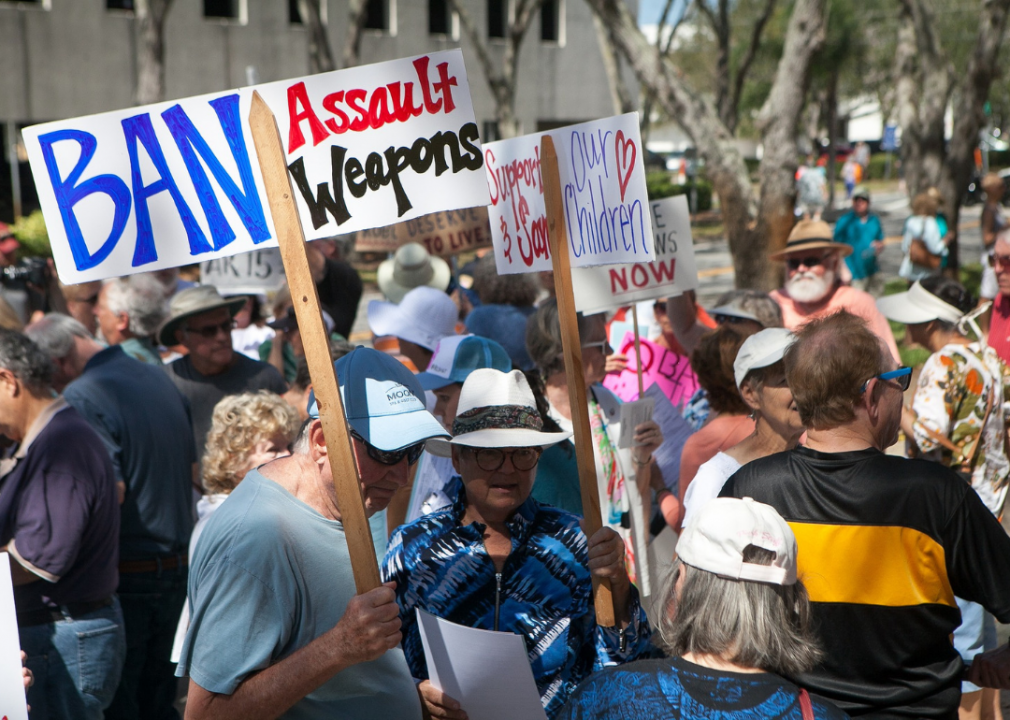
Pixabay
Assault weapons ban
The Public Safety and Recreational Firearms Use Protection Act of 1994 aimed to get certain semiautomatic weapons off the streets. It expired 10 years later. Gun control advocates complained that the act was weak, marred by loopholes that allowed manufacturers to evade the law with minor changes, and failed to ban all semiautomatic weapons. Gun rights advocates said it infringed on their constitutionally guaranteed right to bear arms and did little to deter violence.
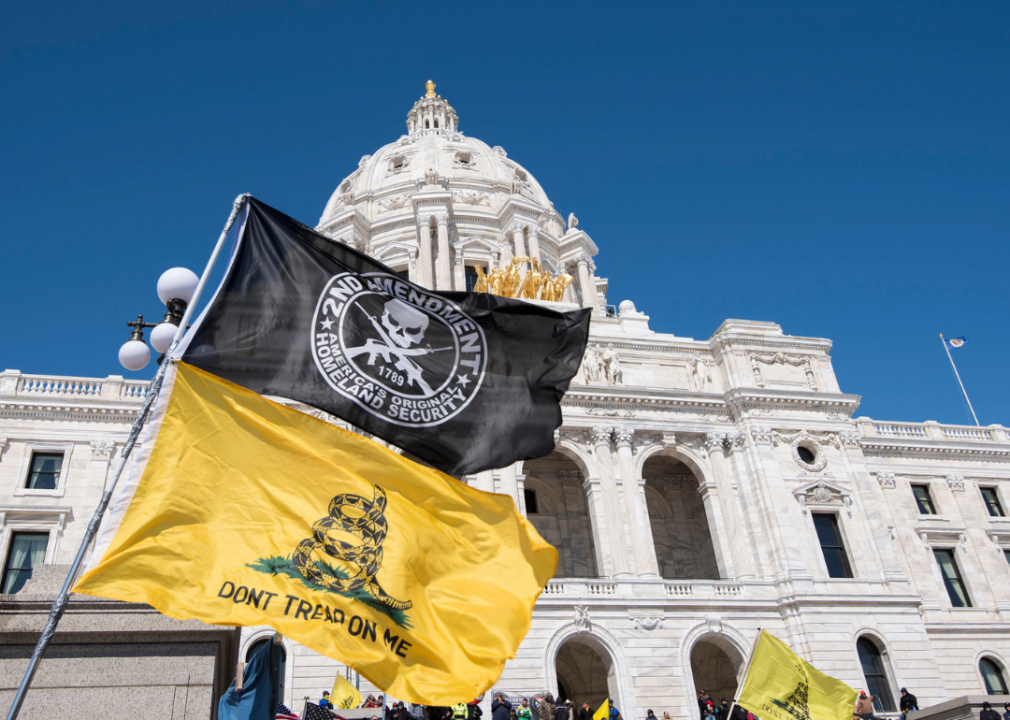
Fibonacci Blue // Flickr
Second Amendment
The Second Amendment of the U.S. Constitution says, “A well regulated Militia, being necessary to the security of a free state, the right of the people to keep and bear Arms, shall not be infringed.” Seemingly endless debates revolve around its intent, what comprises such a militia, and the extent of its protection of individual rights to own guns.
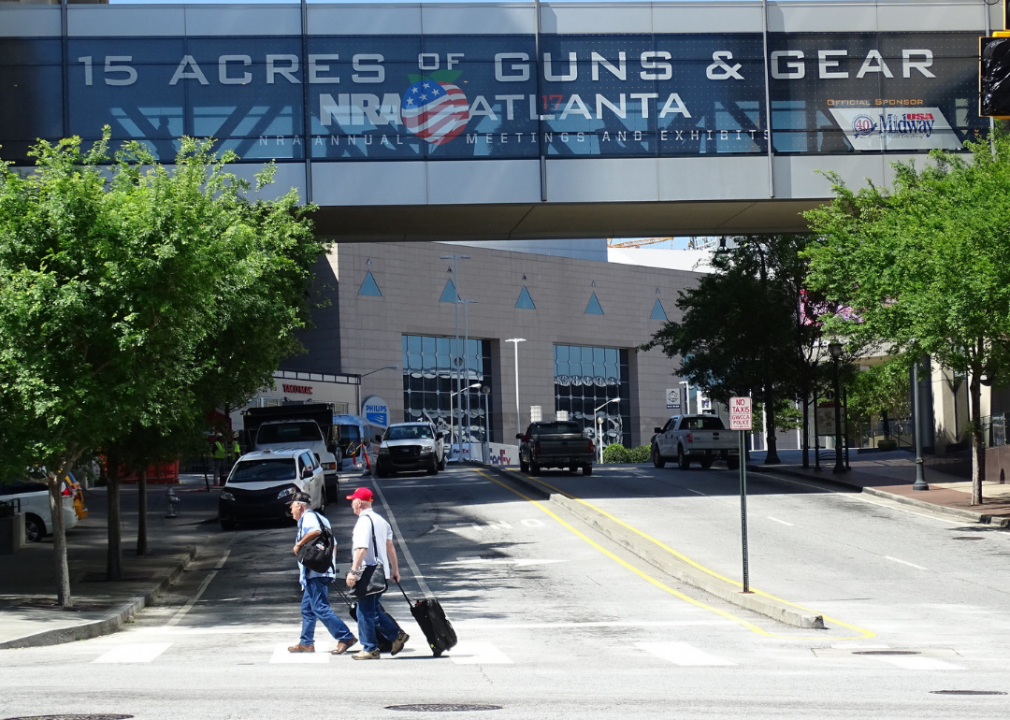
Adam Jones // Flickr
National Rifle Association
The NRA was founded following the Civil War by Union Army veterans to promote and encourage rifle marksmanship. The modern-day NRA claims 5 million members, and its lobbying arm fights for gun rights and against gun restrictions. The NRA spent more than $30 million to support Donald Trump’s bid for the presidency in 2016.
You may also like: History of the NRA
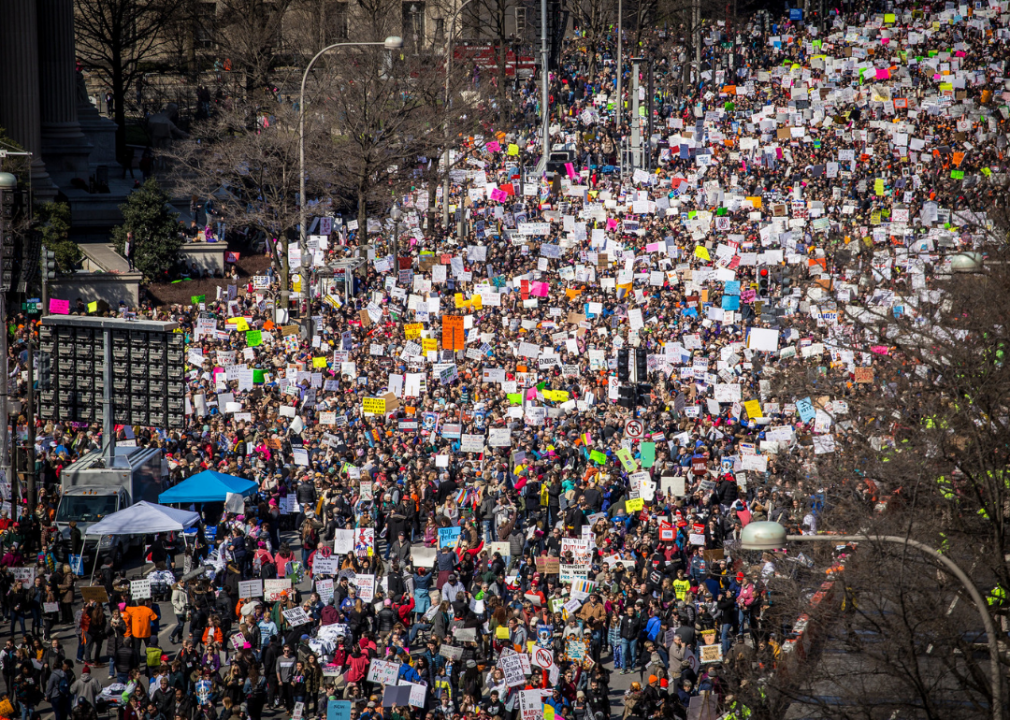
Phil Roeder // Flickr
March for Our Lives
Survivors of the 2018 mass school shooting created the March for Our Lives organization at Marjory Stoneman Douglas High School in Parkland, Florida. It has called for a reduction in the number of firearms in civilian hands by 30%, a mandatory federal gun buyback program for assault weapons, an Internal Revenue Service investigation into the National Rifle Association, and a re-examination of the 2008 U.S. Supreme Court ruling allowing handguns to be kept in homes.
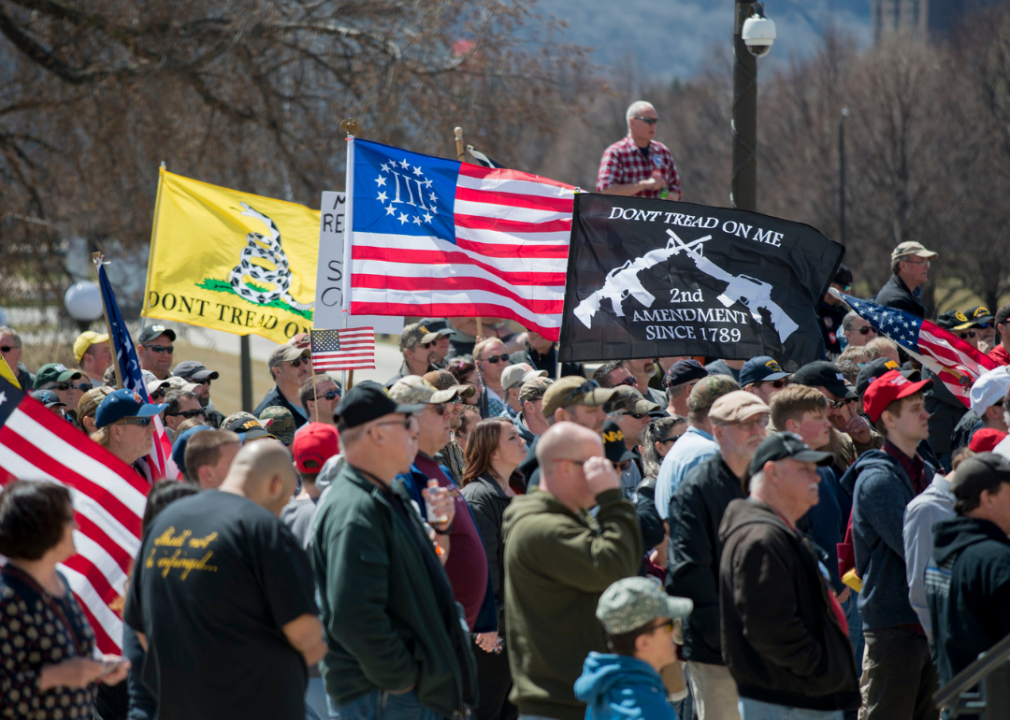
Fibonacci Blue // Flickr
Gunowners of America
Founded in 1975, the Gunowners of America (GOA) calls itself the “no compromise” gun lobby. It believes that “gun control of all forms is ineffective and unconstitutional.” The GOA positions itself as a rival to the NRA which it claims is weak at protecting the Second Amendment. The GOA is suing the Bureau of Alcohol, Tobacco, Firearms and Explosives, and is leading the legal challenge to a ban on bump stocks, an attachment sometimes used with assault weapons.
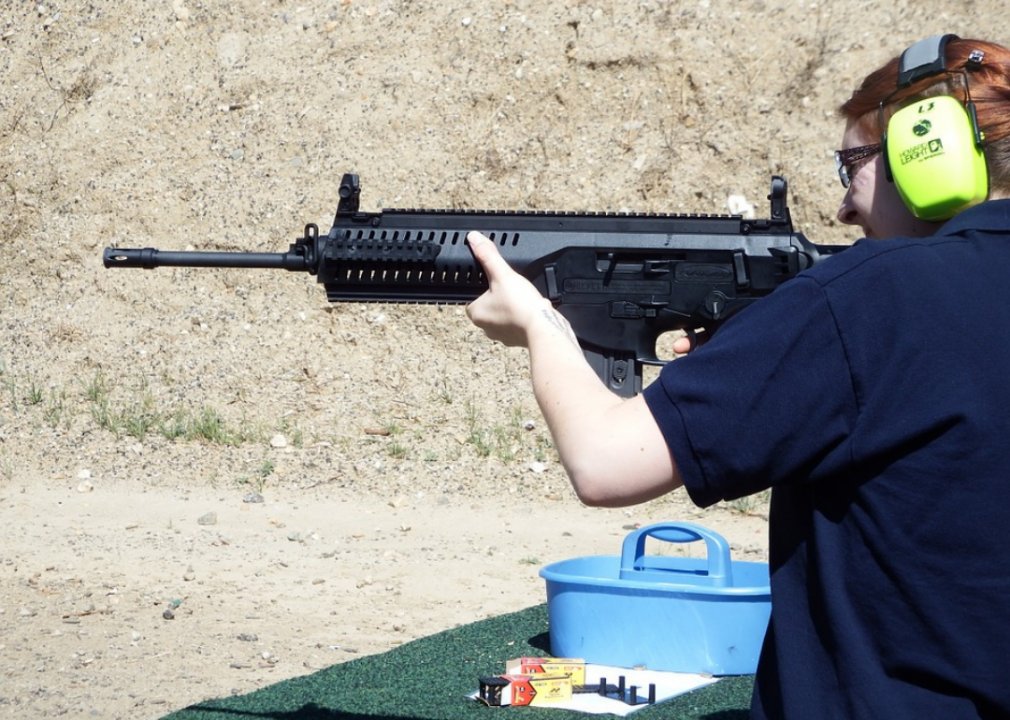
Max Pixel
Assault weapon
An assault rifle can fire in fully automatic mode, meaning when the trigger is pulled and held down, the weapon will shoot continuously until the trigger is released or the gun runs out of ammunition. Machine guns are assault rifles. It is a politically laden term, as major gun groups say it was made up by the anti-gun lobby and that guns don’t assault people.
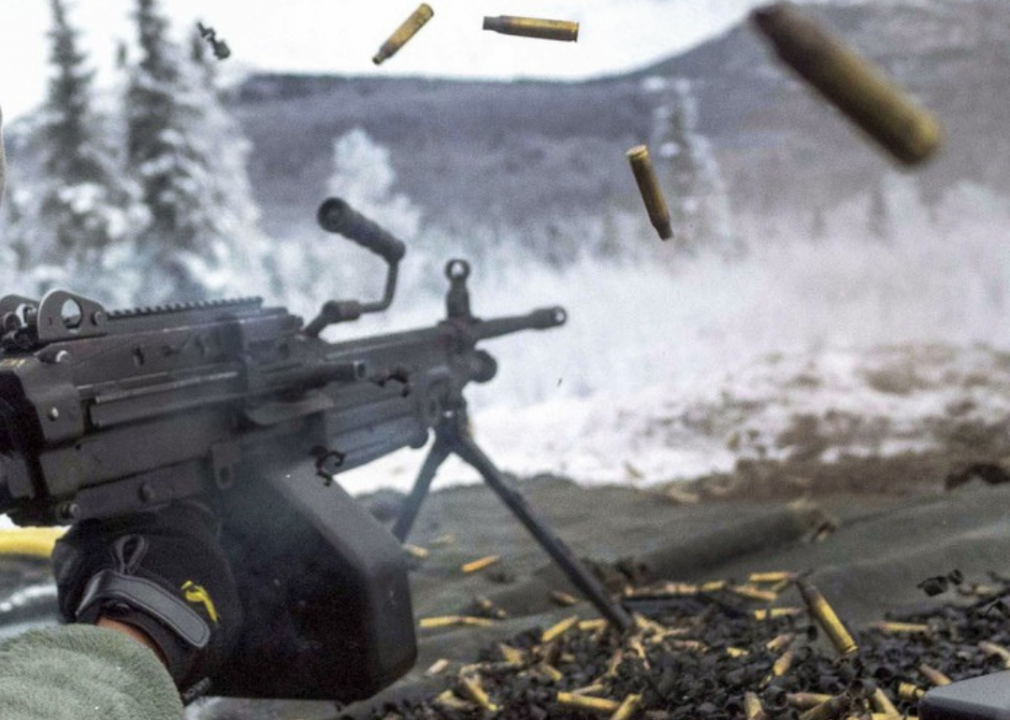
Justin Connaher // U.S. Air Force photo
Automatic weapon
An automatic weapon loads another round mechanically after the first round has been fired. It can be semiautomatic, firing one shot per single pull of the trigger, or fully automatic, loading and firing ammunition until the trigger is released, the ammunition is exhausted, or the weapon jams.
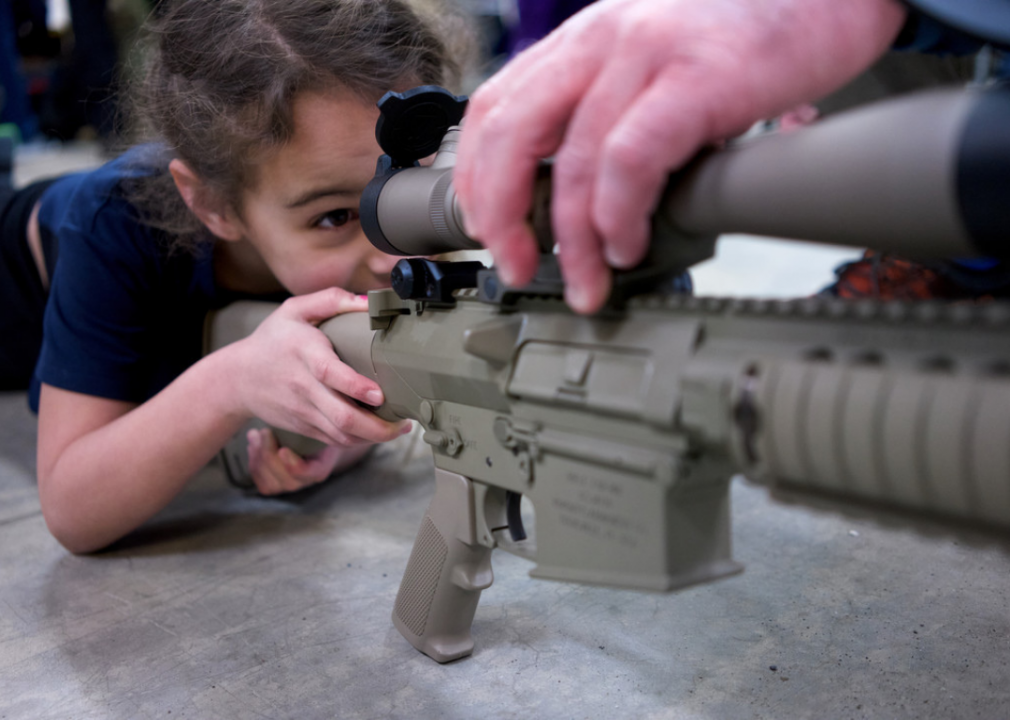
David Bedard // U.S. Air National Guard photo
Semiautomatic weapon
Semiautomatic rifles fire one bullet each time the trigger is pulled, automatically loading the next round from the magazine into the chamber. They also are called self-loading rifles or auto-loading rifles.
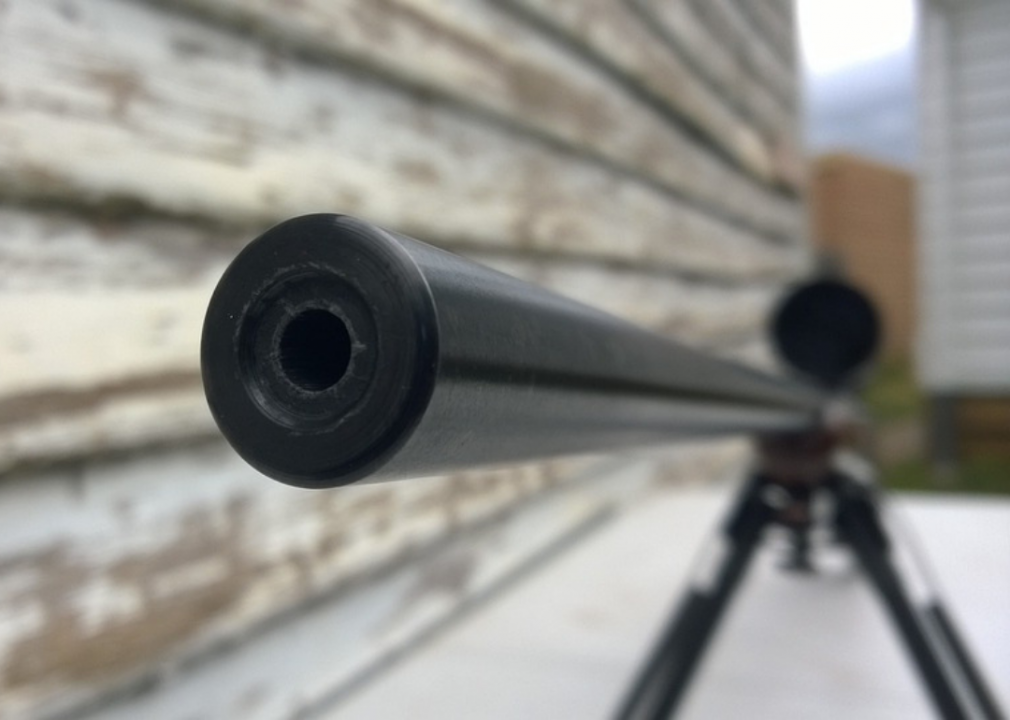
Max Pixel
Caliber
Caliber is the measure of the internal diameter of a gun’s barrel and the outside diameter of its bullet. It is measured in hundredths or thousandths of an inch—.45 handgun has a barrel diameter of 0.45 inches. It also may be measured in metrics, such as a 9mm handgun.
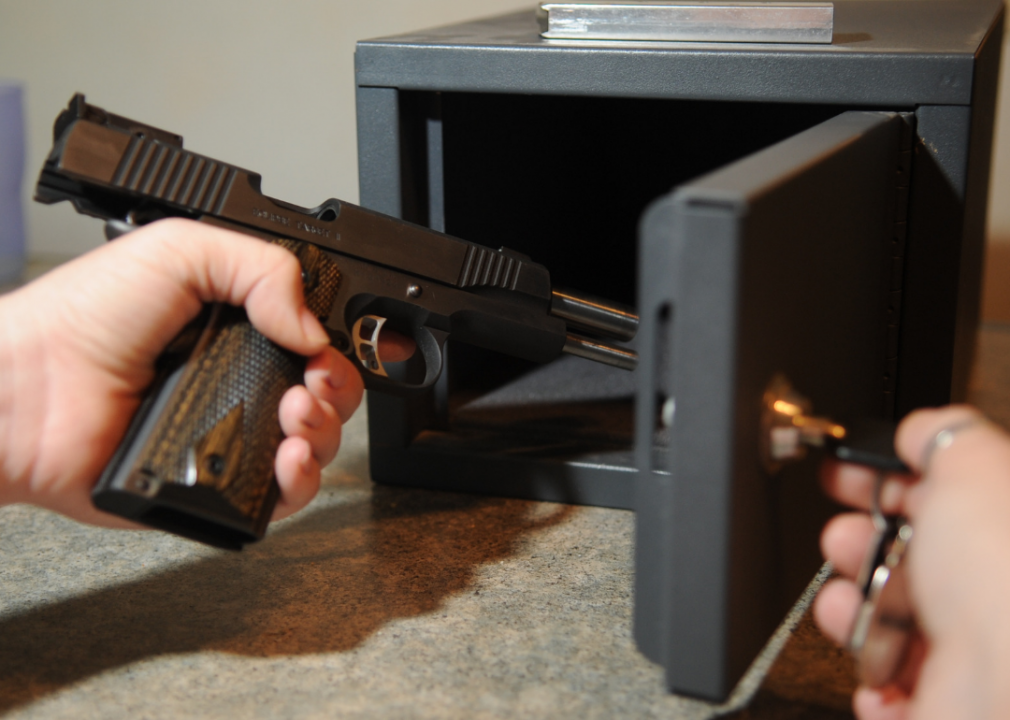
Tech. Sgt. Thomas Dow // U.S. Air Force Photo
International gun control
Other developed nations have far more stringent gun laws than the United States. For instance, Canada recently banned the sale and import of handguns. The United Kingdom bans handguns, while purchasing a gun in Japan is allowed only for hunting, professional use, and gun competitions. Gun owners must document where their weapon and ammunition are stored and may not fire their guns except for the reasons they obtained them.

Pfc. Nicholas P. Baird // USMC
Brady Law
The Brady Handgun Violence Prevention Act of 1993, known as the Brady Law, imposed a five-day waiting period after a person applies to purchase a gun. It was passed after then-White House Press Secretary Jim Brady was shot and badly wounded during an assassination attempt on President Ronald Reagan in 1981. Now, the waiting period is streamlined to take just minutes under the FBI’s National Instant Criminal Background Check System.
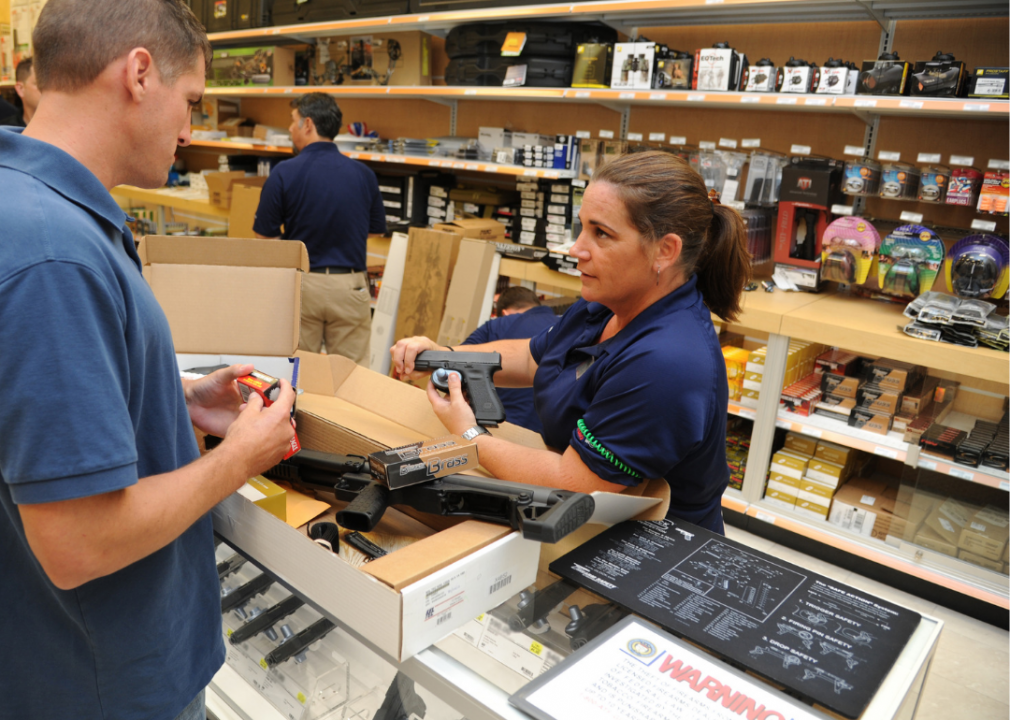
Kemberly Groue // U.S. Air Force photo
National Instant Criminal Background Check System
The National Instant Criminal Background Check System, mandated by the 1993 Brady Law, is a database containing information to determine if a buyer is eligible to purchase a gun. It is used by licensed dealers before ringing up a sale. More than 1.3 million sales have been denied under this system, according to the FBI.
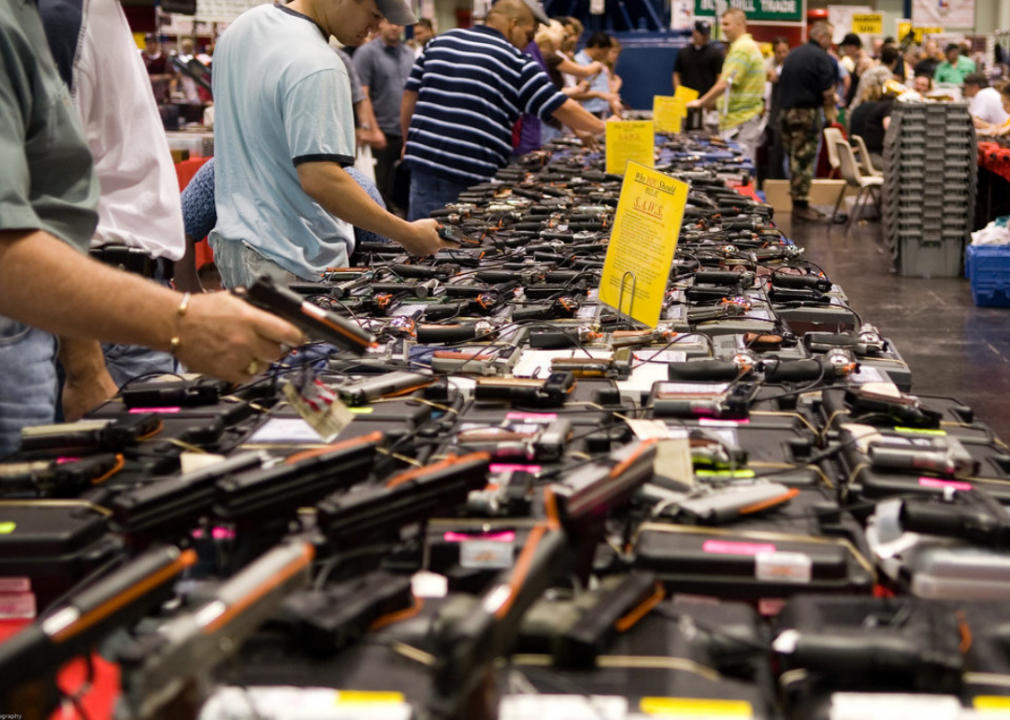
M&R Glasgow // Flickr
Gun show loophole
The so-called gun show loophole refers to the legal exemption that allows private sellers, such as gun show vendors, to sell weapons without conducting background checks. While federally licensed gun sellers must run background checks, not all sellers must be licensed. Those sales are known as the secondary market.
The Gun Show Loophole Closing Act of 2021 was introduced in the U.S. House in 2021, but has yet to proceed out of committee.
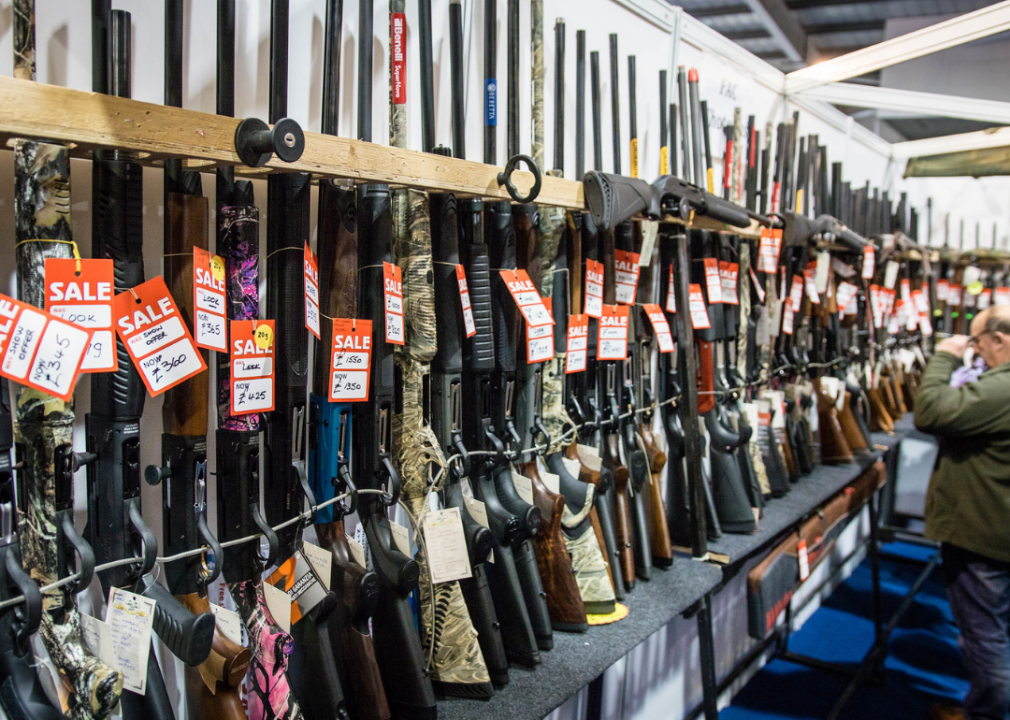
big-ashb // Flickr
Strawman purchase
Considered a loophole in gun control, with a strawman purchase, someone who is ineligible and seeking a gun can use someone eligible to obtain the weapon. Prosecutors say it’s difficult to prove the intent of a strawman not to keep the gun, and few states have laws regulating secondhand purchases.
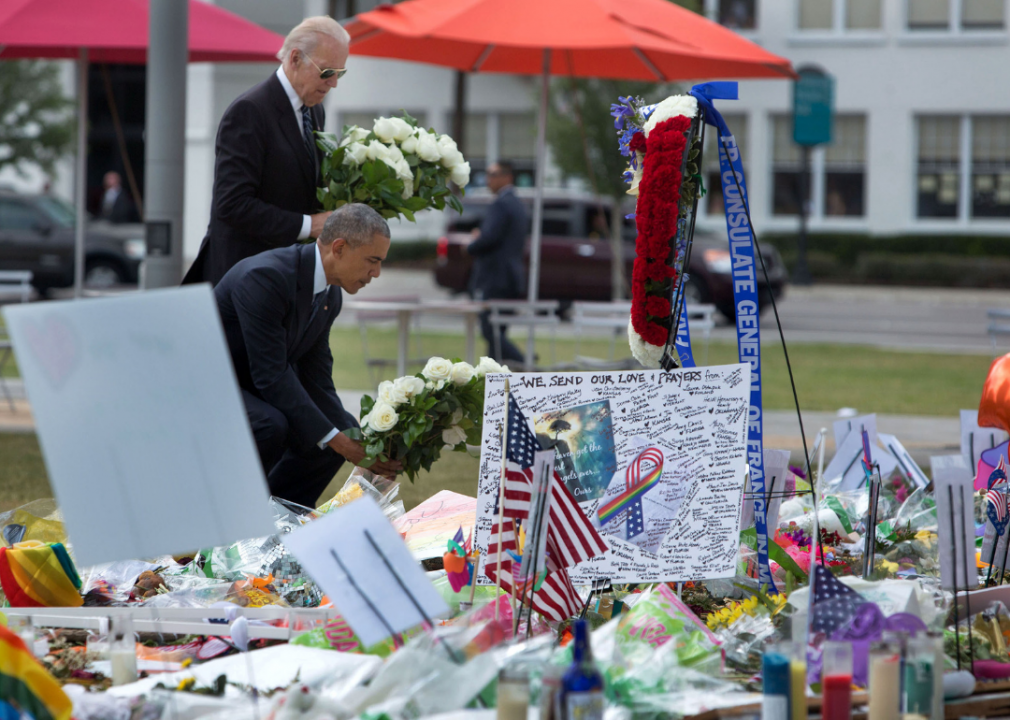
Pete Souza // Official White House Photo
Mass shootings
The United States has more mass shootings than any other developed nation. Among the most horrific was in 2012, when a gunman killed 20 children and six adults at Sandy Hook Elementary School in Newtown, Connecticut. A shooting in 2016 at a nightclub in Orlando, Florida, that left 50 dead, was the deadliest until the following year when a gunman killed 59 people at a Las Vegas music festival. In 2018, a gunman killed 17 people at a Parkland, Florida, high school, and 22 people were killed in August 2019 at a Walmart in El Paso, Texas.
While these deadly events were less frequent during the height of the COVID-19 pandemic, 2022 has seen more than 650 mass shootings as of late October, the deadliest of which was at Robb Elementary School in Uvalde, Texas, on May 24, which left 22 dead and another 18 injured. It took place just 10 days after a gunman opened fire at a supermarket in Buffalo, New York, killing 10 people.
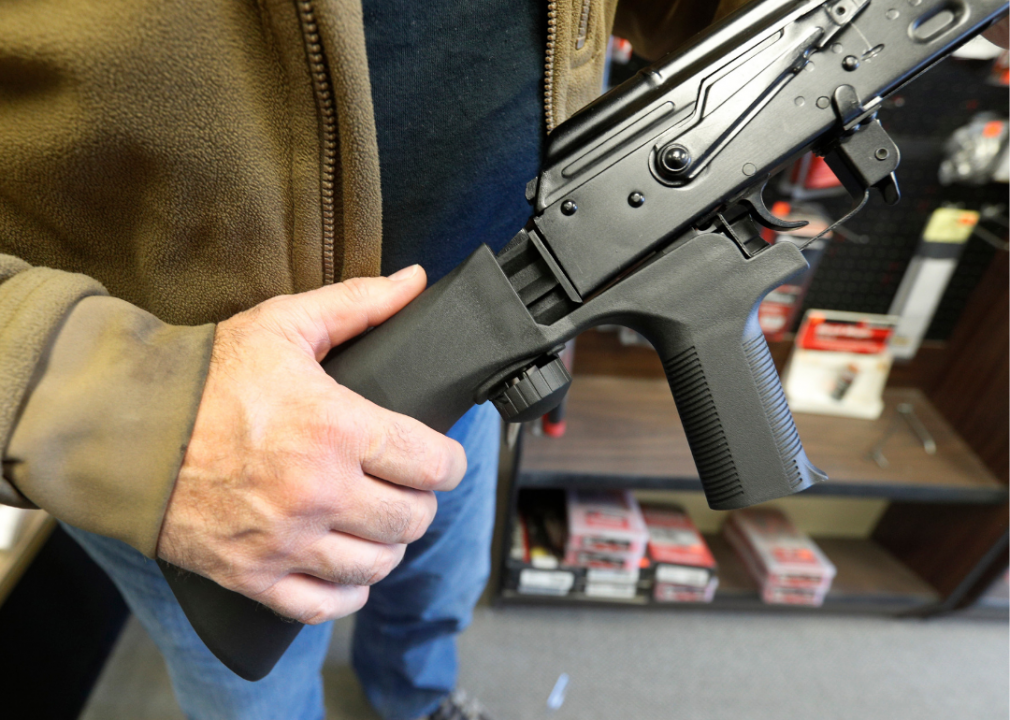
George Frey // Getty Images
Bump stocks
A bump stock is an attachment designed to make a semiautomatic rifle fire faster. It replaces the weapon’s stock—the part held against the shoulder—freeing it to slide back and forth rapidly and harness the recoil energy. A dozen of the rifles used by the gunman in the 2017 Las Vegas mass shooting were modified with bump stocks, allowing him to fire over 1,100 rounds in 11 minutes. Bump stocks are illegal for almost all U.S. civilians; despite suits filed by gun rights groups to reverse this law, the U.S. Court of Appeals upheld the federal ban on bump stocks in August 2022.

James Case // Flickr
Binary trigger
Like a bump stock, a binary trigger increases a weapon’s firing speed. Unlike a bump stock, it is legal in many states. A binary trigger allows the firearm to shoot one bullet when the trigger is pulled and one when it releases. Using a binary trigger, a 30-round magazine can be emptied in about three seconds.
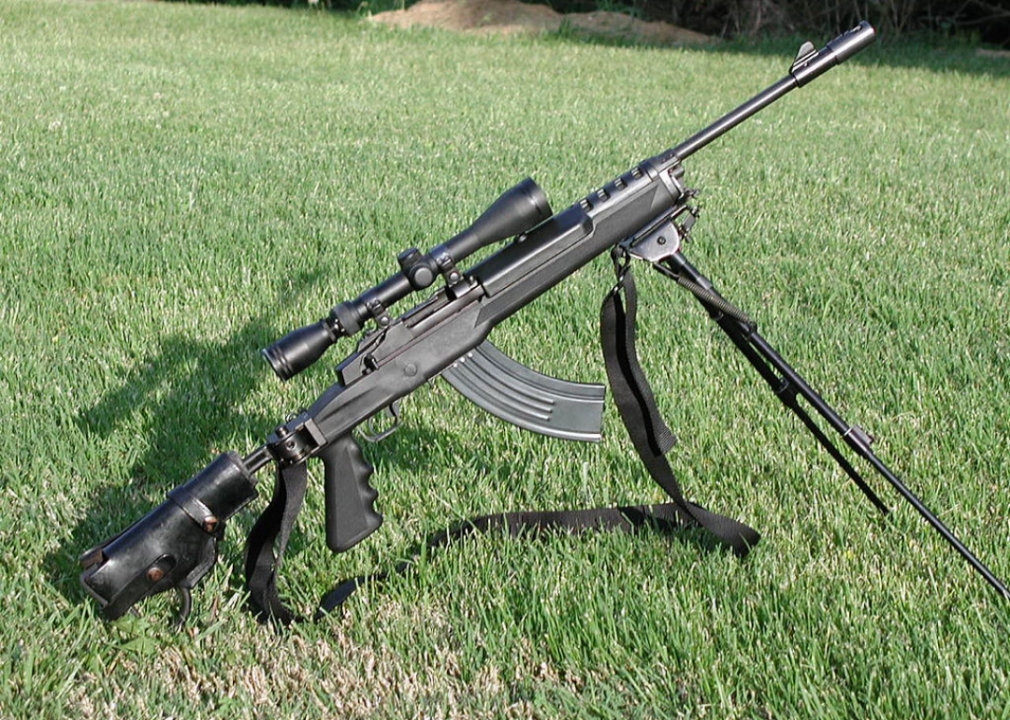
Berean Hunter // Wikimedia Commons
Pistol grip
A pistol grip is considered a defining feature of an assault weapon. It is used to improve stability against a weapon’s recoil. Gun control advocates say a pistol grip helps shooters who are spray firing from the hip, and the feature was prohibited under the assault weapons ban, but since the ban expired, this type of grip has been difficult to regulate. For example, California has been undergoing challenges to its assault weapons ban, which affects the use of pistol grips; gun manufacturers also alter the design of their weapons in order to circumvent regulation.

doublep4556 // Shutterstock
Flash suppressor
A flash suppressor also is a feature of assault-style weapons. It allows hot air and gas to escape from the gun barrel, creating a smaller flash as the bullet is fired. It is designed to improve visibility for the shooter.
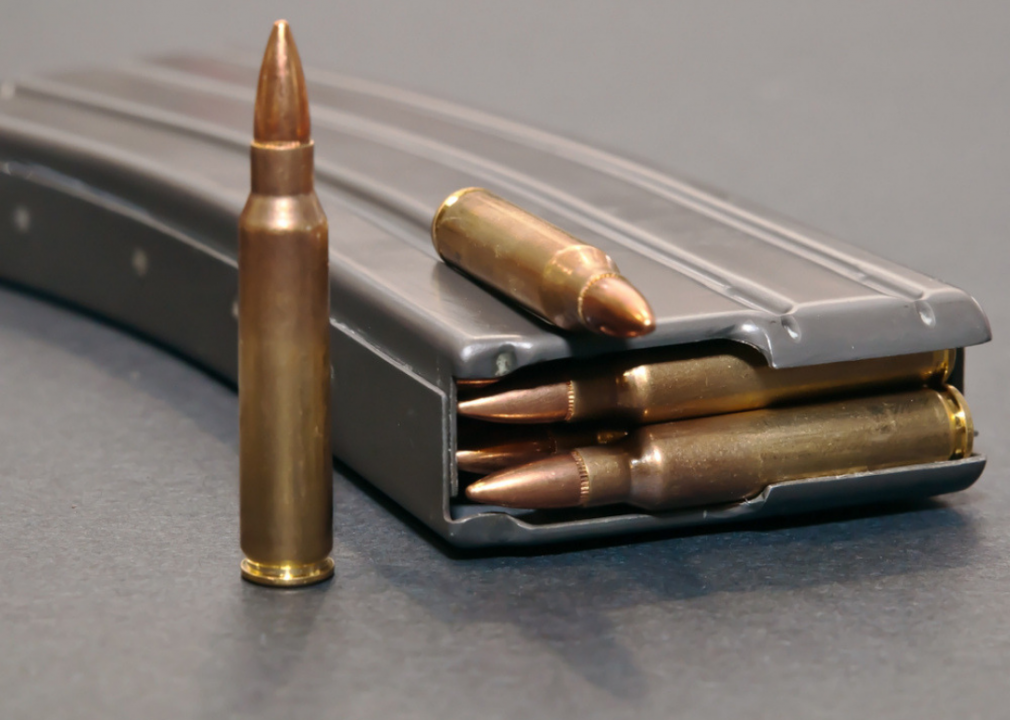
woodsnorthphoto // Shutterstock
High-capacity magazine
Definitions vary, but generally a magazine that holds more than 10 rounds of ammunition is considered high capacity. The gunman in the August 2019 Dayton, Ohio, mass shooting that killed nine people had a 100-round magazine. Using high-capacity magazines is legal in many states. Gun control advocates say that while restrictions on magazine size may not stop mass shootings, they may limit the carnage if the shooter must pause to reload.
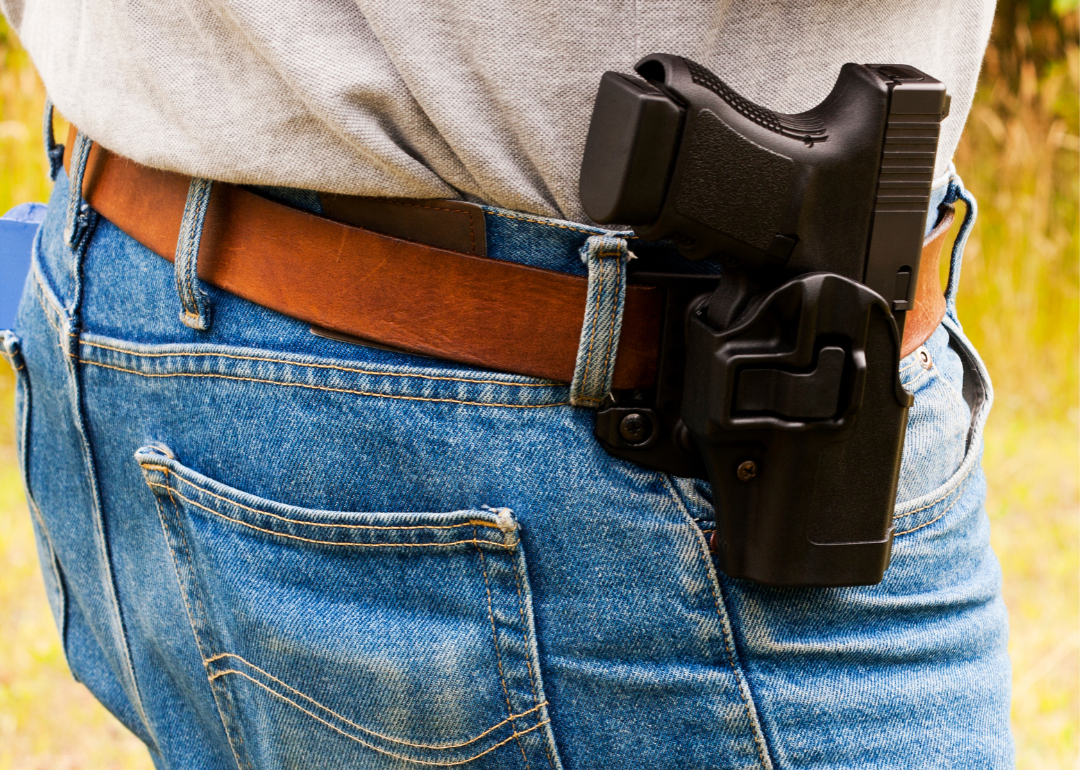
Canva
Open carry
Open carry refers to the practice of carrying openly visible firearms in public. Five states and Washington D.C. forbid the open carry of handguns in public places. Thirty-one states allow open carry without any license or permit, although in some cases the weapon cannot be loaded. Forty-seven states allow the open carry of a long gun, such as a rifle or shotgun, although some states do not allow the weapons to be loaded.
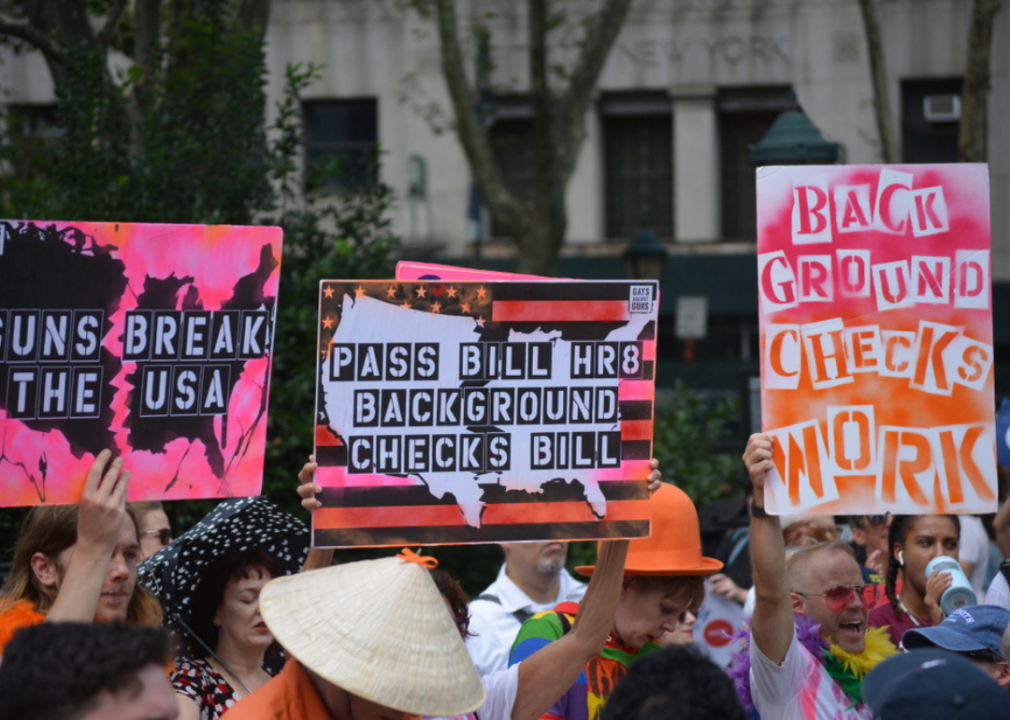
Christopher Penler // Shutterstock
Background checks
Under federal law, background checks are required to buy guns from a licensed vendor, which includes retailers. Among those ineligible to buy a gun are felons, those dishonorably discharged from the military, and people convicted of domestic violence. A background check is not federally required to buy a gun from a private, unlicensed seller, including online and at gun shows. Gun control advocates want background checks expanded, while the NRA opposes expanded checks, saying they would not stop criminals who obtain weapons through theft, the black market, relatives, or friends.
You may also like: A history of police violence in America



